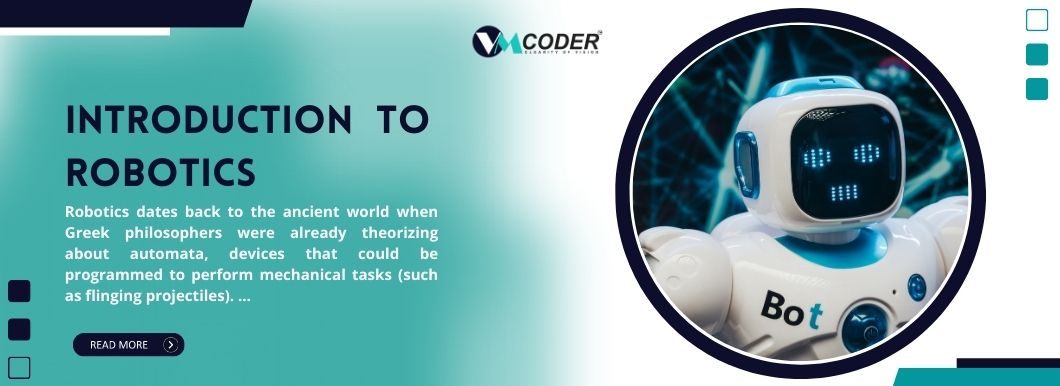Introduction To Robotics
Robotics dates back to the ancient world when Greek philosophers were already theorizing about automata, devices that could be programmed to perform mechanical tasks (such as flinging projectiles). In the late 19th century, a German engineer named Karel ?apek coined the term robotics to refer specifically to this new field of study.
Robots are used in industry to manufacture products or work that humans cannot do because it requires skill or physical strength beyond what would be possible with automation. In this sense, robots can be used in factories where they work with humans on assembly lines. They are also used in military applications, deployed alongside humans as weapons systems (e.g., tanks) or reconnaissance units (e.g., surveillance drones).
Robotics is a branch of electronics that deals with the design and construction of robots. Robotics involves using sensors to sense and analyze the environment around it and then using this information to make decisions. Robots are usually programmed to follow a set of instructions or perform tasks based on the results of previous analyses.
George Devol built the first industrial robot in 1918. Karel ?apek and Isaac Asimov developed the concept further in Japan in their stories. Still, it was not until 1951 that three scientists at Stanford University developed a remote-controlled robot capable of picking up objects and moving them around.
Who are Robots?
A robot is instrumentally rational, meaning it can be programmed to do what it thinks is in its best interest.This may be interpreted as a metaphor for how we think about how humans work and interact with each other. This metaphor suggests that we are more like robots than we realize. We feel emotions drive our decision-making process, but when you look at the actual decision-making process, you find it is more likely to be based on logic and reasoning than emotion.
Robots used to be large metal boxes with heavy motors that would move around on wheels or roll across the floor. They were not very sophisticated and were used mostly for industrial work such as manufacturing or assembly lines. Over time they have gotten smaller and more efficient, allowing them to be used in many different industries, including healthcare and education.
Robots are often used in fields such as science, medicine, industry, construction, law enforcement, and the military. A robot is the product of the robotics field, where programmable machines are built that can assist humans or mimic human actions.
Robots are often used in military and security applications where they can be programmed with instructions to perform a particular task like opening doors or turning lights on/off when there is no one around to do it for them.
Types of Robots
From tiny bots that can fit in your hand to large industrial machines, these bots have a wide range of applications.The first use of robots was in factories and warehouses, where they helped humans do tasks that were dangerous or too heavy for them. These days, automated bots are used for many jobs and tasks such as detecting leaks and inspecting equipment.
Let us now have a look at the different types of Robot which are available to us-
-
Pre-Programmed Robots
Although it may seem like a dream, robots are already used to performing simple, monotonous tasks. For example, they can be used as an elevator operator or a factory worker. They do not require any human interaction and can operate without fail. In the next decade, robots can help with more complex tasks in the industry. Robots will become more sophisticated and capable as technology develops. Robots can also be used for more complex tasks such as welding or painting. These robots, which may be guided by 3D cameras, use computers to program themselves to do the same task repeatedly under the same conditions.
-
Humanoid Robots
The earliest humanoid robots were created in the 1950s by the American engineer William Grey Walter. He developed a robot named "Bathroom Buddy," which could move around on the floor and hold items such as toothbrushes on a tray. The robot was designed to assist disabled people with bathing needs, but it didn't take off as an industry. In the 1980s, Japanese roboticist Hiroshi Ishiguro developed an early prototype of the Honda's Asimo robot, which could walk around autonomously and even play soccer. The first widely known humanoid robot appeared in 1995 as Sony's AIBO dog-like robot. It had 256 sensors and ten motors, allowing it to walk, run, dance, stand and sit upright on its own.
-
Autonomous Robots
They can perform a variety of functions, including driving vehicles, performing search and rescue operations, delivering packages or food items, and even performing surgery. Autonomous robots can be divided into three main categories: mobile robots, which move around on their own; fixed-base robots, which are stationary; and mobile-robot systems, in which multiple autonomous robots work together to accomplish a task.
Mobile robots have been used for decades to perform security patrols and construction tasks where heavy equipment is impractical. Recently, advances in robotics have made it possible for them to be used in more complex environments like hospitals or factories.
Fixed-base robots are stationary machines that require no programming to operate. They typically have limited sensors and motors with which they perform tasks such as picking up objects from shelves or conducting inspections on machinery components.
-
Teleoperated Robots
Operators can remotely control the robot through a video-conferencing system and a computer interface. The robot, typically mounted on wheels, can be programmed to navigate autonomously in an environment or perform specific tasks. Teleoperated robots have many applications in industrial and consumer fields, such as automotive manufacturing, construction, and agriculture. The teleoperator must be aware of how the robot communicates with its environment, whether it is walking or running or how fast it is moving. The operator also needs to know where each joint in the robot's body is located so that he can move it accordingly.
Written by :
Shweta Bhatia
Leave a Reply
Your email address will not be published. Required fields are marked *






